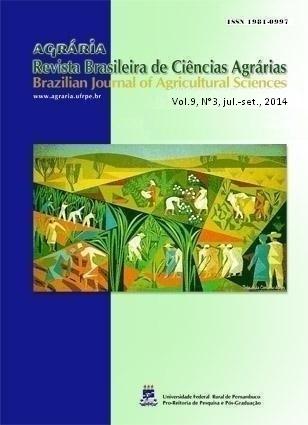Spray nozzles hollow cone in function of the working pressures
DOI:
https://doi.org/10.5039/agraria.v9i3a3480Keywords:
pesticides, volumetric distribution, application technologyAbstract
The spray nozzles are responsible for the design produced by the liquid sprayer and is of fundamental importance for the technology of application of pesticides, influencing variation in application rate per area. The objective of this study was to evaluate hydraulic spray nozzles hollow cone JA-1, JA-2, JA-5 and TVI 8003, under working pressures of 420, 630 and 1000 kPa. The tests of uniform volumetric distribution and characterization of the population of drops were carried out in two stages: the first stage for obtaining the distribution profile used a patternator with a height of 0,50m, the second stage was performed characterization of the droplet spectrum from the following parameters: mean volume diameter (MVD), droplet density (DD), relative amplitude (RA) and drift potential risk (DPR). The hollow cone nozzles have irregular profiles, depending on the nominal flow. A uniform volumetric distribution of the nozzles was evaluated influenced by fluid pressure and nominal flow. The hollow cone nozzles showed highly variable volumetric distribution when subjected to working pressures. All nozzles studied criteria should be used to present risk problems will drift. The air induction nozzles showed the lowest droplet density.
Downloads
Downloads
Published
How to Cite
Issue
Section
License

This work is licensed under a Creative Commons Attribution-NonCommercial 3.0 Unported License.


